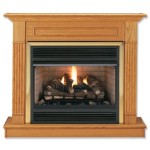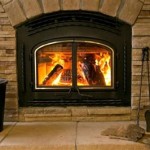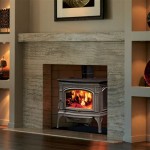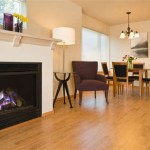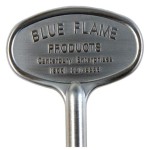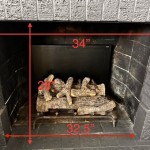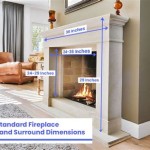Understanding Fireplace Patch Cement: Repairing and Maintaining Your Hearth
Fireplace patch cement, also frequently referred to as refractory cement or furnace cement, is a specialized material designed to withstand the high temperatures inherent in fireplace and wood-burning stove environments. It is a crucial component for maintaining the structural integrity and functionality of these heating appliances by addressing cracks, gaps, and other forms of damage that can compromise safety and efficiency. This article examines the properties, applications, selection criteria, and proper usage of fireplace patch cement.
Properties and Composition of Fireplace Patch Cement
Fireplace patch cement differs significantly from conventional mortar or cement due to its unique composition. It is formulated to resist thermal shock, which is the rapid expansion and contraction caused by extreme temperature fluctuations. This resistance is achieved through the use of specific aggregates and binders. Common components include:
*Refractory Aggregates:
These are materials that possess high melting points and resistance to deformation at elevated temperatures. Examples include fireclay, alumina, and silica. The type and proportion of aggregate influence the cement's ability to withstand specific temperature ranges. Finer aggregates are generally preferred for creating a smoother finish and filling hairline cracks. *Binders:
Binders hold the aggregates together and provide adhesion to the existing fireplace structure. Commonly used binders include calcium aluminate cement and sodium silicate. Calcium aluminate cement offers high early strength and resistance to chemical attack, while sodium silicate provides excellent adhesion and temperature resistance. *Additives:
Certain additives may be included to improve workability, reduce shrinkage, or enhance specific performance characteristics. These additives can include plasticizers, air-entraining agents, and bonding agents.The specific ratio of these components is carefully controlled to achieve the desired properties of heat resistance, adhesion, and durability. High-quality fireplace patch cement is formulated to minimize cracking and spalling, ensuring a long-lasting repair.
Applications of Fireplace Patch Cement
Fireplace patch cement possesses a wide range of applications in the maintenance and repair of fireplaces, wood stoves, and related structures. Some common applications include:
*Repairing Cracks and Gaps:
Filling cracks and gaps in firebrick, masonry, and mortar joints is a primary application. These defects can allow heat and flue gases to escape, reducing efficiency and potentially posing a safety hazard. Fireplace patch cement effectively seals these openings, restoring the structural integrity of the firebox. This application is crucial for preventing carbon monoxide leakage into the living space. *Sealing Stove Pipes and Flue Liners:
Sealing joints in stove pipes and flue liners is essential for preventing leaks and ensuring proper draft. Patch cement creates an airtight seal that prevents the escape of combustion byproducts and maintains optimal chimney performance. This is especially important for connecting stovepipes to the chimney collar. *Patching Firebrick:
Firebrick, which lines the firebox, is subject to significant wear and tear due to repeated exposure to high temperatures. Patch cement can be used to repair damaged firebrick, extending its lifespan and preventing further deterioration of the fireplace structure. This is cost-effective compared to replacing entire firebricks. *Rebuilding Mortar Joints:
Over time, the mortar joints between firebricks can erode. Fireplace patch cement can be used to repoint these joints, restoring the structural integrity of the firebox. This is a common maintenance task that helps to prolong the life of the fireplace. *Securing Stove Gaskets:
Fireplace cement can also be used to adhere replacement gaskets to stove doors, preventing air leakage and ensuring efficient combustion. The high-temperature resistance of the cement is essential for maintaining a proper seal.The versatility of fireplace patch cement makes it an indispensable tool for homeowners and professionals involved in fireplace maintenance and repair.
Selecting the Right Fireplace Patch Cement
Choosing the appropriate fireplace patch cement is crucial for ensuring a successful and durable repair. Several factors should be considered during the selection process:
*Temperature Rating:
Select a cement with a temperature rating that exceeds the maximum expected operating temperature of the fireplace or stove. This information is typically provided on the product label. Using a cement with an insufficient temperature rating can lead to premature failure. *Application Type:
Different cements are formulated for specific applications. Some are designed for patching small cracks, while others are intended for rebuilding larger sections of masonry. Choose a cement that is appropriate for the intended repair. *Curing Time:
Curing time refers to the length of time required for the cement to fully harden and achieve its maximum strength. Consider the curing time when planning the repair, as the fireplace or stove may need to be taken out of service during this period. Some cements offer faster curing times than others, which can be beneficial for time-sensitive repairs. *Consistency and Workability:
The consistency of the cement should be suitable for the application method. Some cements are designed to be applied with a trowel, while others are more liquid and can be brushed or poured. Consider the ease of application and the desired finish when selecting a cement. *Pre-mixed vs. Dry Mix:
Fireplace patch cement is available in both pre-mixed and dry-mix formulations. Pre-mixed cements are convenient and ready to use, while dry-mix cements offer greater control over the consistency and water content. Choose the formulation that best suits your needs and preferences. *Manufacturer Reputation and Reviews:
Selecting a reputable manufacturer can help ensure the quality and performance of the fireplace patch cement. Read online reviews and consult with experienced fireplace professionals to gather information about different brands and products. *Expansion and Contraction Rates:
Look for a cement that has similar expansion and contraction rates as the surrounding materials (firebrick and mortar). This helps reduce stress and prevents the cement from pulling away from the original structure when exposed to temperature changes.Careful consideration of these factors will help ensure that the selected fireplace patch cement is the right choice for the specific repair project.
Preparing the Surface for Patch Cement Application
Proper surface preparation is critical for ensuring optimal adhesion and longevity of the fireplace patch cement. The following steps should be taken to prepare the surface before application:
*Cleaning:
Thoroughly clean the surface to remove any loose debris, soot, dust, or grease. A wire brush, scraper, and vacuum cleaner can be used to effectively remove these contaminants. Grease and oil residues can be removed with a suitable degreasing agent. *Removing Loose Material:
Remove any loose or crumbling mortar or firebrick from the area to be patched. Use a chisel and hammer to carefully chip away the deteriorated material, ensuring that the surrounding surfaces are stable. *Dampening the Surface:
Dampen the surface with water before applying the patch cement. This helps to improve adhesion and prevent the cement from drying out too quickly. Use a spray bottle or sponge to lightly moisten the surface, avoiding saturation. *Creating a Key (Optional):
For larger repairs, consider creating a key by roughening the surface with a chisel or scoring tool. This provides a mechanical bond that enhances adhesion. *Protection:
Protect surrounding areas with drop cloths or masking tape to prevent accidental staining or damage.Following these surface preparation steps will significantly improve the chances of a successful and durable repair.
Applying Fireplace Patch Cement: Best Practices
The proper application of fireplace patch cement is essential for achieving a strong and lasting repair. Adhering to these best practices can help ensure optimal results:
*Mixing (If Applicable):
If using a dry-mix cement, carefully follow the manufacturer's instructions for mixing the material. Add water gradually, mixing thoroughly until a smooth, workable consistency is achieved. Avoid adding too much water, as this can weaken the cement. *Applying the Cement:
Apply the cement to the prepared surface using a trowel, putty knife, or other appropriate tool. Press the cement firmly into the crack or gap, ensuring that it fills the entire void. For larger repairs, apply the cement in thin layers, allowing each layer to partially dry before applying the next. *Smoothing and Shaping:
After applying the cement, smooth and shape the surface to match the surrounding area. Use a damp sponge or trowel to create a seamless transition. *Curing:
Allow the cement to cure according to the manufacturer's instructions. This typically involves keeping the area damp for a specified period. Avoid using the fireplace or stove during the curing process. Consult the product specifications for details on proper curing procedures. *Sealing (Optional):
After the cement has fully cured, consider applying a sealant to further protect it from moisture and wear. Choose a sealant that is specifically designed for use in high-temperature environments. *Cleanup:
Clean all tools and equipment immediately after use with water. Dispose of any excess cement properly.By following these best practices, homeowners or professionals can ensure a successful and durable fireplace patch cement repair. This will contribute to the safe and efficient operation of the fireplace or wood-burning stove.

How To Put Concrete Over A Brick Fireplace In 8 Steps

How Can I Repair A Concrete Ledge On Fireplace Paint Hometalk

Chimney Crown Seal Vs New Construction Full Service

Diy Concrete Fireplace Makeover Before After Cherished Bliss

Repair Ed Or Broken Fireplace Base With Furnace Cement How To Fix Damaged

Diy Concrete Fireplace Makeover Before After Cherished Bliss

Cement Chimney Crowns Repair Madison To Dubuque

Quikrete 10 Oz Fireplace Repair Mortar 862024 The Home Depot

Diy Concrete Fireplace Makeover Before After Cherished Bliss

Easily Solve These Common Chimney Repair Problems Chimneysaver
Related Posts

